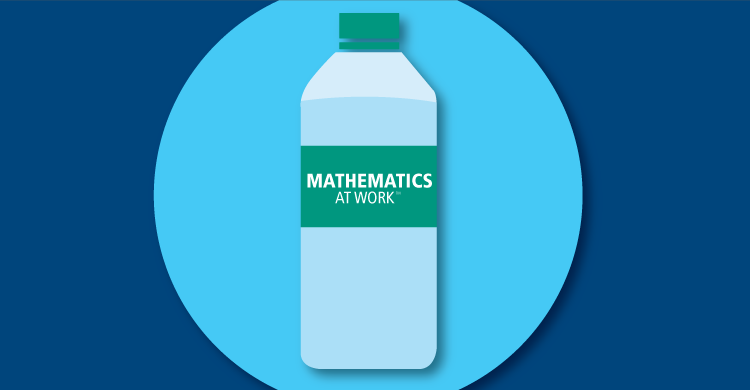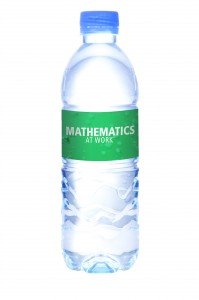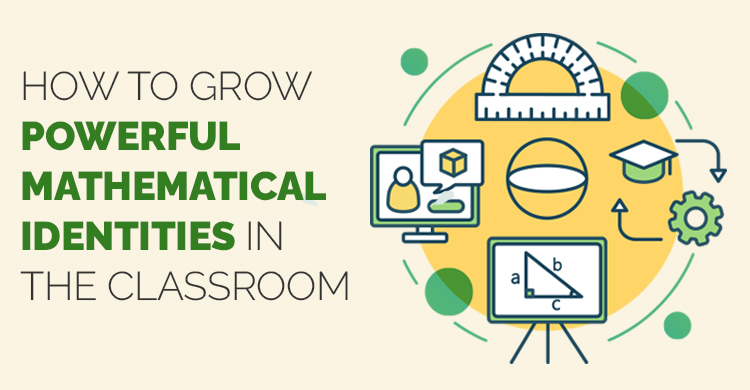Since 2012, I have presented this mathematical task as part of our Mathematics at Work™ professional development with middle school teachers:
You have a bottle of water.
You are offered 1/3 off the price
for the same size bottle.
OR
You are offered 1/3 more water
at the same price.Which is the best offer for you
as the consumer?
a. Only 1/3 more water would be preferred.
b. Only 1/3 off the price would be preferred.
c. They are the same offer.
Before I describe an answer or solution pathway for this task, let’s take a minute to explore the nature of the mathematical tasks students are to learn in class during this decade.
First: What is a mathematical task?
The National Council Teachers of Mathematics (NCTM) first identified mathematical task in its (1991, 2008) Professional Teaching Standards as “worthwhile mathematical tasks” (p. 24). Melissa Boston and Peg Smith (2009) later provided this succinct definition: “A mathematical task is a single complex problem or a set of problems that focuses students’ attention on a specific mathematical idea” (p. 136).
Mathematical tasks include activities, examples, or problems to complete as a whole class, in small groups, or individually. The tasks provide the rigor (levels of complex reasoning from the conceptual understanding, procedural fluency, and application of the tasks) that students require and thus become an essential aspect of your teacher teams’ collaboration and discussion. In short, the tasks are the problems teachers choose to determine the pathway of student learning and to assess student success along that pathway.
The decisions you make about what and how a students learns each day is based on the mathematical tasks choices you make every lesson, every day. Those choices are a lot of power!
As Glenda Lappan and Diane Briars (1995) state:
There is no decision that teachers make that has a greater impact on students’ opportunities to learn and on their perceptions about what mathematics is, than the selection or creation of the tasks with which the teacher engages students in studying mathematics. (p. 139)
The selection of worthwhile mathematical tasks is so critical that it is one of the eight research-informed instructional strategies listed in Principles to Actions (NCTM, 2014). And, it is two of the ten high leverage team actions (HLTA’s) in our Beyond the Common Core Handbooks (Solution Tree, 2015).
A key collaborative team decision, then, is to decide which tasks to use in a particular lesson or unit to help students attain the essential learning standards. A growing body of research links students’ engagement in higher-level-cognitive-demand tasks to overall increases in mathematics learning, not just in the ability to solve problems (Hattie, 2012; Resnick, 2006).
Second: What is the difference between higher-level vs. lower-level cognitive demand tasks?
Higher-level-cognitive-demand mathematical tasks are those that provide “opportunities for students to explain, describe, justify, compare, or assess; to make decisions and choices; to plan and formulate questions; to exhibit creativity; and to work with more than one representation in a meaningful way” (Silver, 2010, p. 2).
In contrast, lessons using tasks with only lower-level cognitive demand are “characterized as opportunities for students to demonstrate routine applications of known procedures or to work with a complex assembly of routine subtasks or non-mathematical activities” (Silver, 2010, p. 2).
The cognitive demand of a mathematical task may be often lowered (perhaps unintentionally) during the implementation phase of the lesson (Stein, Remillard, & Smith, 2007). Thus, during the planning phase before the unit begins, your teacher team should discuss how you will respond when students urge you to lower the cognitive demand of the task during the lesson.
Third: How do we use higher-level cognitive demand tasks in class?
Supporting productive struggle in learning mathematics is one of the eight research-informed mathematics teaching practices outlined in Principles to Actions (NCTM, 2014). The following is a list of reflective questions that can help your teacher team with conversations around productive student struggle when presenting them with higher-level cognitive demand tasks:
1. How do we define and differentiate between higher-level-cognitive-demand and lower-level-cognitive-demand tasks for each essential standard of the unit?
2. How do we select common higher-level-cognitive-demand and lower-level-cognitive-demand tasks for each essential standard of the unit?
3. How do we create higher-level-cognitive-demand tasks from lower-level-cognitive-demand tasks for each essential standard of the unit?
4. How do we use and apply higher-level-cognitive-demand tasks for each essential standard during the unit?
5. How will we respond when students urge us to lower the cognitive demand of the task during the implementation phase of the lesson?
OK, back to the Water Bottle Mathematical Task!
This mathematics task first surfaced online July 3, 2012, under the headline: Consumers Prefer to Get More Rather than Pay Less, Because They’re Bad At Math (Time magazine). The punch line to the article is that Akshay Rao, the General Mills Chair of Marketing at the University of Minnesota’s Carlson School of management, presented the water Bottle task to his economics undergraduate students, the majority choose answer C: They are the same offer. Of course by now, if you are reading this blog, you know there is a difference and that indeed 1/3 less cost, for the same bottle is the “better deal”.
I envision this mathematical task as appropriate for 6th grade. You too, right? It really is about understanding unit pricing (a 6th grade standard) and not falling victim to what the times article references as “Base-Value Neglect”. Middle school high school teachers can think about how to use this task with your students, and to challenge them to think of visual, numerical, and maybe algebraic solution pathways to the task.
Here is the solution (pathway) presented in the Times article:
“But let’s do the math, using some easy round numbers for the sake of simplicity. Say the initial price is $10 for 10 oz. of coffee beans. Hopefully, it’s obvious that the unit price is therefore $1 per oz. An extra 33% more “free” beans would bring the total up to 13.3 oz. for $10. That $10 divided by 13.3 oz. give us a unit price of $0.75 per oz. With a 33% discount off the initial offer, though, the proposition becomes $6.67 for 10 oz., for a unit price of $0.67 per oz.2″
Here is (in my mind at least) a more elegant solution for middle school. Draw a picture of a rectangle to represent any size water bottle. Cut it into thirds. Since you get the same amount (all three of the thirds) for one third off the price, it is now a cost of .67cents (2 of the 3rds) per unit.
Now take the same rectangle and add a third more on the top. You now have 4 pieces all the same size, and three of the four or .75 is the cost for the original size bottle.
So, the “Better Deal” from a “unit pricing” point of view is .67c per original unit.
By the way, I use this problem at social gatherings with friends a family a lot… it is cause for quite a debate! Consumers like to debate: What does it mean to get a better deal? What if the product I purchase could spoil? What if I just want more because I am thirsty, its still a “good” deal, right?
And that is the fun of mathematics tasks placed in a context. The context can often allow for much debate regarding the actual interpretation of the social situation described by the higher-level cognitive demand mathematical task. Whatever reasoning pathway you choose to find a solution to this mathematical task, I hope you have some fun!
[author_bio id=”390″]







